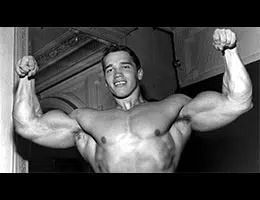 The notion of hypertrophy comes from the scientific Latin hypertrophia and refers to the excessive growth of something . The concept is usually used in the field of medicine and biology to refer to the exaggerated increase in the size of an organ .
The notion of hypertrophy comes from the scientific Latin hypertrophia and refers to the excessive growth of something . The concept is usually used in the field of medicine and biology to refer to the exaggerated increase in the size of an organ .
Muscular hypertrophy , in this framework, consists of an increase in the size of the muscles . It may be a transient hypertrophy (generated when, after training, the muscle swells for a short period) or a chronic hypertrophy (which extends over time).
In bodybuilding , muscle hypertrophy is one of the goals pursued by the athlete. The bodybuilder uses various series of exercises and techniques to make his muscle tissue grow.
In this context, it is said that many factors must combine to give rise to muscle hypertrophy; among them are the following: intracellular fluid, inflammatory processes, fibers of various types, hormones, genes, reproduction of satellite cells, myostatin. Although the way to achieve this phenomenon is not publicly known, apart from the many unknowns there are also well-defined concepts. Summarizing all the information to its minimum exponent, we arrive at the two fundamental points of muscle hypertrophy:
* mechanical tension : the only way to strengthen a muscle is to force it to overcome resistance through the application of a force, and this is called mechanical tension ;
* metabolic stress : to ensure that this force is effective, a certain amount of cellular stress is also necessary. Certain factors can help partially regulate hypertrophy; Among them we find a lack of oxygen (called hypoxia ), myokines, lactate accumulation, free radicals or inflammation. For this reason, some techniques such as occlusion training serve to reduce the amount of mechanical tension necessary for the same degree of hypertrophy.
Although experts have managed to define these two fundamental concepts for muscle hypertrophy, their application in practice is very complex, because it is not so easy to determine the relationship that exists between them. On the one hand, it is correct to say that it is direct, since without mechanical tension it is not possible to generate metabolic stress. However, it may also seem opposite since an excess of mechanical tension (approximating the individual's maximum level ) can considerably reduce the number of repetitions per session and, consequently, the degree of metabolic stress.
 Strength training produces new myofibrils (the contractile units) and widens the old ones, giving rise to a muscle of greater proportions and resistance . This is known as myofibrillar hypertrophy , and serves to understand muscle development in greater depth. This type of exercise also expands the sarcoplasm, a fluid found within muscle fibers, and that is why we can talk about sarcoplasmic hypertrophy to focus on the specific phenomena that include it.
Strength training produces new myofibrils (the contractile units) and widens the old ones, giving rise to a muscle of greater proportions and resistance . This is known as myofibrillar hypertrophy , and serves to understand muscle development in greater depth. This type of exercise also expands the sarcoplasm, a fluid found within muscle fibers, and that is why we can talk about sarcoplasmic hypertrophy to focus on the specific phenomena that include it.
It is important to note that muscle hypertrophy involves muscle cells growing but not dividing. Hyperplasia , on the other hand, involves an increase in the size of a tissue or organ due to an increase in the number of cells, caused in turn by a process of cell division.
Ventricular hypertrophy , on the other hand, is a disorder characterized by the growth of the thickness of the myocardium that forms the wall of the right or left ventricle. This condition can be caused by valvular insufficiency, hypertrophic heart disease or high blood pressure , among other illnesses.
Virginal breast hypertrophy or juvenile gigantomastia , finally, is a rare imbalance that causes excessive and even disabling breast enlargement during puberty. The only possible treatment to reverse this hypertrophy is a surgical intervention (a mammoplasty).
